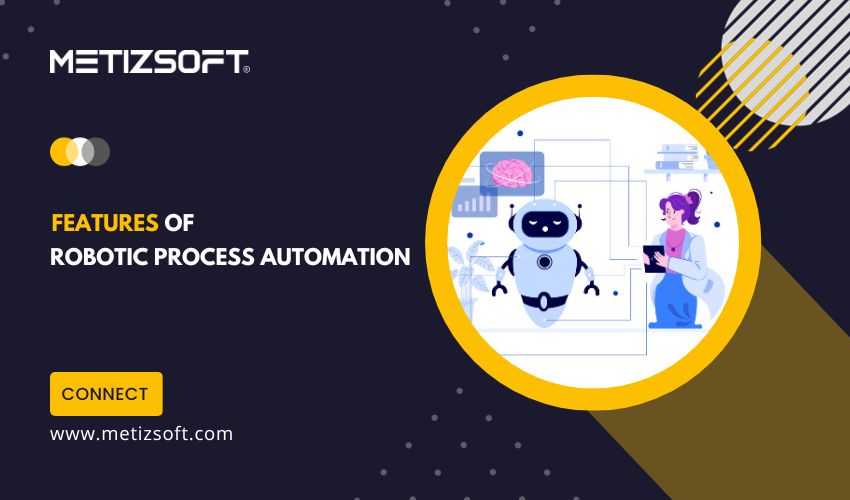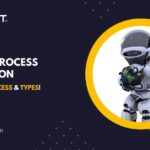
Regardless of size and capabilities, businesses crave high-end efficiency and agility today to enhance productivity. If they don’t adapt to quick technological changes and make seamless integration, they might lack credibility among their clients and customers.
The introduction of RPA has put companies in a more commanding position than ever. It has allowed them to explore new opportunities to stay proactive and competitive in the digital marketplace.
Robotic Process Automation, or RPA, is more than only automation. It beholds unanimous game-changing capabilities that can help businesses grow immensely worldwide. If you are considering implementing an RPA solution, looking for specific features to enhance business efficiency is essential.
This blog aims to highlight the capabilities of RPA tools that can support businesses in operating more effectively.
Table of Contents
Top Robotic Process Automation (RPA) Features
RPA features are worth your attention as they can transform your business’s insight. Here’s a brief of the top 10 RPA features for you to know and understand:
Rich Analytics Suite – You will find a rich analytical suite in many renowned RPA tools. It helps identify the performance of the digital workforce without any integrations. The data can be accessed remotely, providing detailed server operations, workflows, and robots analysis. Also, it allows users to identify issues and streamline future workloads.
Security & Compliance – Robotic Process Automation tools empower users to configure and customize encryption capabilities, safeguarding specific data types against potential disruptions in network communication.
The comprehensive automation process encrypts all data, audits, and instructions accessed by the bot, effectively preventing malicious tampering and ensuring the integrity of historical record compliance.
Source Control – One of the most staggering features of every RPA software. Each version of a process in progress can be securely stored without the risk of deletion. This component provides auditable management and control over the RPA environment, including clients, bots, users, and schedules. It also serves as the single point of access and control for bot implementation.
Bot Studio/Interface – RPA tools facilitate bots’ swift and uncomplicated creation by capturing mouse clicks and keystrokes through integrated screen recorder components. Additionally, numerous RPA products can create and edit bots manually using the Task Editor.
Script Less Automation – Many Robotic Process Automation (RPA) tools feature a user-friendly drag-and-drop interface, enabling the creation of bots without the need for traditional scripting. This scriptless automation empowers individuals with limited programming language expertise to design bots effortlessly using a graphical user interface (GUI) and user-friendly wizards.
Hosting & Deployment – The RPA system is crafted to facilitate customer deployment across virtual machines, terminal services, and the cloud. Customers particularly favor cloud deployment due to its scalability and flexibility among the various deployment options. Furthermore, the RPA system can seamlessly deploy robots in large groups, numbering in the hundreds.
This feature includes an agentless configuration, effectively addressing central server synchronization issues and runtime update concerns. It proactively safeguards client configurations and mitigates conflicts during configuration and bot deployment processes.
Exception Handling (Rule-Based) – Rule-based RPA handling is one of the standard and exception features of Robotic Process Automation systems. By proactively handling exceptions, the bot can trigger actions based on its configuration. The action includes:
- The server reassigns the process to another bot for retry and removes the first bot from production.
- In case of failure, exceptions are reported and sent to humans for resolution.
Seamless Integration – The RPA feature allows easy integration with the company’s third-party applications. RPA bots imitate human interactions with various ERP and CRM solutions, eliminating the need for expensive APIs and simplifying task execution. It offers unparalleled flexibility in determining the performance of the digital workforce.
Debugging – The most significant benefit of RPA is its capability to adjust processes dynamically. Some RPA can adjust while debugging, while others require manual intervention.
One of the benefits of dynamic debugging is the ability to change variable values and test different scenarios without having to start and stop the program. This approach allows developers to make changes on the fly and resolve issues in a production environment without requiring changes to the process.
Optical Character Recognition (OCR) – OCR, or Optical Character Recognition, has become one of the most sought-after features of RPA. In response to this trend, many RPA vendors now offer data extraction capabilities from images and documents.
RPA tools also come equipped with a screen scraping feature that captures data from the system screen and cross-checks it against given details to understand it better.
In addition to text recognition, RPA tools can structure data from unstructured documents, such as invoices, claim processing, tax forms, and rating generators.
Benefits of RPA Features
Robotic Process Automation features comprise exclusive benefits that can significantly transform industries’ work cycles and bring high-end compatibility and accuracy. Here are some ways RPA features can help industries:
Enhance Accuracy – RPA eliminates the risk of human errors in regular data entry and other repetitive tasks. It increases accuracy and leads to improved data quality and decision-making within organizations.
Improve Efficiency – RPA automates repetitive and rule-based tasks, enabling faster and more accurate completion.
Cost Reduction – It reduces labor costs associated with manual processes and minimizes errors, resulting in cost savings related to rework and rectifying mistakes.
Quick Processing Time – RPA’s rapid processing is particularly beneficial in industries where time-sensitive activities, such as customer service and logistics, are critical for success.
24/7 Operation – RPA bots can operate 24/7 without breaking or downtime, ensuring continuous and consistent processing.
Improve Customer Experience – RPA can improve response times and personalize services, enhancing customer experience, satisfaction, and loyalty.
Who can benefit from RPA and its features?
Enterprises across various industries have implemented RPA in finance, compliance, legal, customer service, operations, and IT.
RPA features provide a powerful toolkit for industries to optimize their processes, reduce costs, and improve overall operational efficiency. It has significantly contributed to a more competitive and agile business environment. With the RPA solution, the organization’s virtual workforce team can complete the tasks in less than the average time.
Final Thoughts!
RPA emerges as a dynamic force, streamlining operations, enhancing efficiency, and fortifying data security in the ever-evolving landscape of business automation.
These ten features of RPA can significantly filter your system and business operation and take your business to the next level. For more information about RPA features and their usage, contact Metizsoft Solutions – a renowned RPA Development Company!
AboutManthan Bhavsar
Related Posts
Top 10 Impactful Benefits of Robotic Process Automation (RPA)!
From a buzz/trend to real-time implementation, Robotic Process Automation (RPA) has quickly become the primary asset of...
Unleashing Efficiency: Streamline IT Operations with RPA!
Organizations tirelessly seek ways to optimize operations and boost productivity in today’s fast-paced digital...




